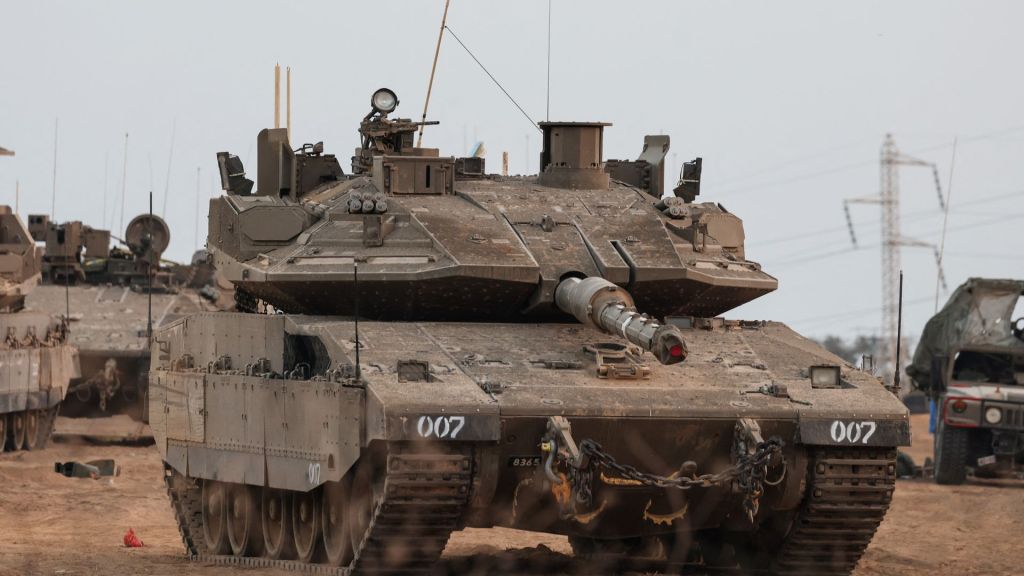Commentary
-
Our commentary partners will help you reach your own conclusions on complex topics.
Hey everybody, Peter Zeihan here coming to you from the great wilds and wide opens of Wyoming.
A few of you wrote in about rare earths, which are a series of materials that are used in everything from petroleum refining, to semiconductors, to safety, glass, to sunglasses.
There’s a little bit in pretty much any sort of modern industrial product and with everything with the Chinese going to hell, there is a concern that there’s a trade issue in a national security issue here.
Right now, the Chinese are responsible for producing about 90% of the world’s rare earth metals that are then used in everything else. So if relations with the Chinese really do tank or the trade system falls apart, are we then in a shortage? This is something I spend a lot of time not worrying about at all. A couple of things to keep in mind.
First of all, rare earths, aren’t rare. They are a by-product of metal mining, particularly lead and silver and copper. The problem is with processing. So for example, here in Wyoming, there’s probably enough rare earth for everything that the United States needs for decades to come. It’s also capable of being produced in Texas and Arkansas and New York and California and Colorado.
We have plenty, but they react very similarly when you try to refine them and you have to separate them out first from the, or, and then from one another, that takes a series of hundreds of acid bass to increase the concentrations of what you’re after. And that takes months just to get a few ounces of a stuff. So how this has gone down is the Chinese subsidize everything that they can technically command in order to ensure their population has as many jobs as possible.
They’ve done this for rare earth, just like they’ve done it for everything else. And so by the time we got to the 1990s, the Chinese had been dumping so much money into this industry that they had driven down the price of rare earth through overproduction.
In the 1990s prices for rare earths dropped by about three quarters. And they’ve never really bounced back in that sort of environment. You’ve got a very different cost structure and it drove a lot of the more traditional producers in the United States, in Europe, in Asia, out of business, but the Chinese never stopped over producing. They simply kept going. And so we were able to make a shift to a high-tech telephone commuting system, much more quickly and much more cheaply than we would have been able to otherwise.
And the second that the Chinese started to use this as a geopolitical issue, we found ways to get by without. So while global demand for rare earth has increased over the course of the last 20, 25 years, the concentration of those rare earths in the American system and the global system is actually gone down per unit of output.
Remember when we made the shift from hard drives to solid state drives? That was about the time the Chinese started to beat jerks about this issue. And so we started using less and that gave a solid state, which uses very few rare earths. Now, again, the issue is processing.
You have to build the infrastructure with that issue, having to build the infrastructure, knowing that they’re not rare. Everyone who uses rare earth in numbers has learned the lesson of the Chinese intervening in the market a long time ago. So everybody has six months to a year of reserves built up. In addition to having some savings programs in place in case they need to suddenly do make do with less.
So there’s a buffer. In addition, Malaysia, Australia, the United States, and others have gone ahead and invested in a lot of the infrastructure that we would need to produce rare earth in mass. Now there will be a lag to spin this up of six to 12 months. So if the Chinese were to vanish from the world tomorrow and take the rare earths with them, we would have a period of tightness that would last no more than a year. And then we’d be fine. This is not something I worry about. Next time we’ll talk about something I do. until then…
-
Iranian strike on Israel not intended to provoke regional war
Rising tensions in the Middle East boiled over again on Saturday, April 13, when Iran launched a direct attack against Israel with over 300 combined armed drones, ballistic missiles and cruise missiles. The attack follows decades of simmering conflict between the two nations, amplified most recently by Israel’s invasion of Gaza and a strike on…
-
The trouble with ‘good’ demographics
Declining birth rates throughout much of Western Europe and America, and in other developed nations like Japan, have alarmed social scientists. Concern is most acute in nations where a shrinking workforce will be expected to pay for the rising costs of a much larger retiring population. But on the opposite end of this spectrum, rapid…
-
Ohio’s oil is a boon for plastics production
The early discovery of oil and gas in Ohio in the 19th century helped the Midwestern state grow to become the nation’s top oil producer, a title it held until Oklahoma dethroned Ohio in 1902. Today, significant technological advancements are unlocking the potential of new oil and gas sources that earlier Ohioans were unable to…
-
The geopolitics of ISIS terrorism
Four gunmen opened fire on a crowd of civilians at a concert venue in Moscow, Russia on Mar. 22, claiming at least 144 lives. U.S. intelligence believes the radical Islamist group ISIS-K, an ISIS offshoot, was behind the attack. Straight Arrow News contributor Peter Zeihan retraces the history of both ISIS and ISIS-K, explaining that…
-
Germany in a post-American world
Germany today is celebrated as the indispensable economic and industrial power of modern Europe. But like many advanced nations, Germany faces demographic decline in the coming decades, which could threaten Germany’s economy and — consequently — the economies of Europe and the world. Straight Arrow News contributor Peter Zeihan predicts a German economic collapse as…
Latest Stories
-
 Getty Images
Getty Images
Chinese hackers target US infrastructure with new persistence
-
 Getty Images
Getty Images
What Senate rules say about dismissing Mayorkas impeachment
-
 Reuters
Reuters
USPS asks for billions more in aid 2 years after getting $107B
-
 Getty Images
Getty Images
France says it has contingency plans as Olympics security questions arise
-
 Getty Images
Getty Images
Biden admin deal will give $6.4B to Samsung to boost chip production
Popular Opinions
-
In addition to the facts, we believe it’s vital to hear perspectives from all sides of the political spectrum.
Latest Opinions
In addition to the facts, we believe it’s vital to hear perspectives from all sides of the political spectrum. We hope these different voices will help you reach your own conclusions.
The opinions published in this section are solely those of the contributors and do not reflect the views of Straight Arrow News.

















Latest Commentary
We know it is important to hear from a diverse range of observers on the complex topics we face and believe our commentary partners will help you reach your own conclusions.
The commentaries published in this section are solely those of the contributors and do not reflect the views of Straight Arrow News.
Peter Zeihan
Geopolitical StrategistThe trouble with ‘good’ demographics
Ohio’s oil is a boon for plastics production
The geopolitics of ISIS terrorism
Dr. Frank Luntz
Pollster and Political Analyst‘Take the job seriously’: Why Americans are fed up with Congress
‘If we can shrink it, it will stop growing’: Americans talk debt, deficit
‘I don’t think they care’: Undecided voters explain their reasons
Pete Ricketts
U.S. Senator for Nebraska